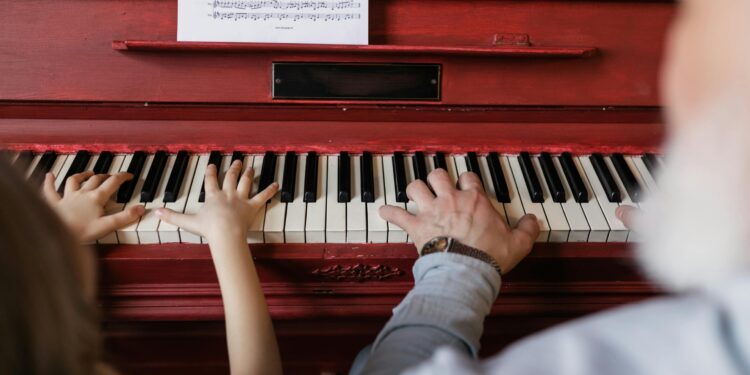Credit: Alena Darmel from Pexels
Learning a new skill requires deliberate practice over time, but passive exposure to the subject in question can help speed up the process, new University of Oregon mouse research suggests.
This finding, which builds on previous research in humans, shows how passive exposure can be a valuable learning tool. It helps explain how watching films in a foreign language can complement grammar exercises and vocabulary flashcards, or how listening to recordings of a professional playing piano concertos could help aspiring musicians improve their own craft. .
The study provides additional insight into the possible brain mechanisms behind this effect, helping scientists understand why passive exposure is so powerful, said James Murray, a UO neuroscientist who led the study at the University of Chicago. alongside fellow OU neuroscientist Santiago Jaramillo, both in the College of Arts. and Sciences.
Because it is much easier to study what is happening in a rodent’s brain than in a human’s, “studying how active training and passive exposure affect learning in mice opens exciting possibilities for studying the neural mechanisms underlying their interaction,” Murray added.
The researchers describe their findings in an article published in the journal eLife.
To study how mice learn, researchers trained the animals to reach for a reward at a particular location in response to tones that rose or fell. All mice were put through an active training protocol, in which they received feedback on their performance to see if they had made the right choice. Some mice were also exposed passively, where they heard the sounds while not engaged in the task.
Mice that were passively exposed to sounds in addition to being actively trained learned to select the reward location more quickly, the researchers showed. It did not seem to matter whether the passive exposure occurred at the beginning of training or was interspersed in small chunks throughout the active training sessions.
Next, to better understand how learning might occur in the brain, the researchers trained and tested different artificial neural networks on a simulated version of the learning task. Neural networks, a type of machine learning algorithm, process information in a way that mimics the way the brain processes information.
Artificial neurons represent real neurons and learning is carried out by modifying the strength of the connections between these neurons. They are not a direct replica of the brain, but they can be used to generate hypotheses that can then be tested experimentally.
Modeling suggests that passive exposure to a stimulus lays the foundation in the brain, creating a hidden representation of that stimulus that captures its most important features, like drawing an outline in pencil before diving into a detailed painting. Then, during active learning, the brain connects the stimulus to particular behaviors. With passive exposure, the brain is primed to make these connections more quickly.
In the future, the team hopes to record the brain activity of mice during a similar learning task, to see if their predictions come true.
Although the research was carried out using a simple task in mice, the results could also have implications for more complex learning in humans, the researchers suggest. Study co-author Melissa Baese-Berk, a former OU linguist now at the University of Chicago, has previously published studies showing how passive exposure can help adult humans better learn to understand new speech sounds.
“Alongside Melissa and colleagues’ previous work in humans, our results suggest that, in both mice and humans, a given performance threshold can be achieved with relatively less effort by combining effortless passive exposure with active training,” Murray said.
“This information could be useful to humans learning an instrument or second language, although additional work will be needed to better understand how this applies to more complex tasks and how to optimize training programs combining passive exposure and training active.”
More information:
Christian Schmid et al, Passive exposure to task-relevant stimuli improves categorization learning, eLife (2024). DOI: 10.7554/eLife.88406.3
eLife
Provided by the University of Oregon
Quote: Passive exposure can accelerate learning, new research shows (January 26, 2024) retrieved January 26, 2024 from
This document is subject to copyright. Apart from fair use for private study or research purposes, no part may be reproduced without written permission. The content is provided for information only.



